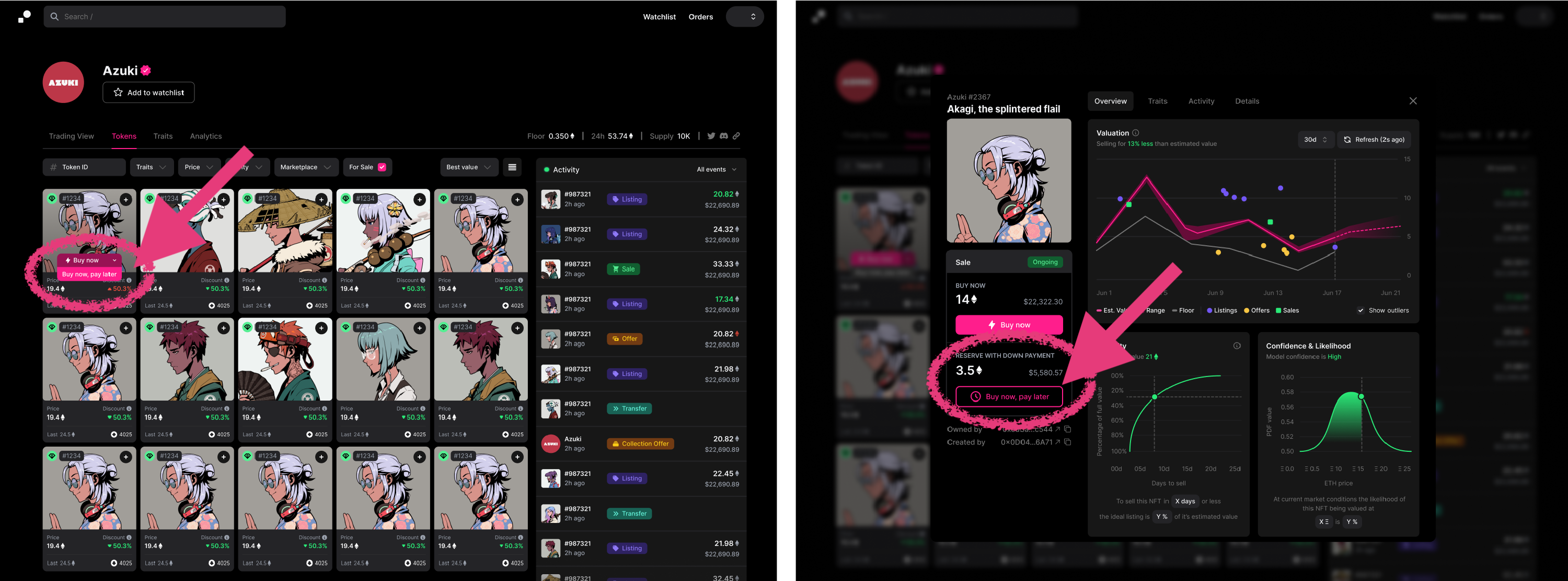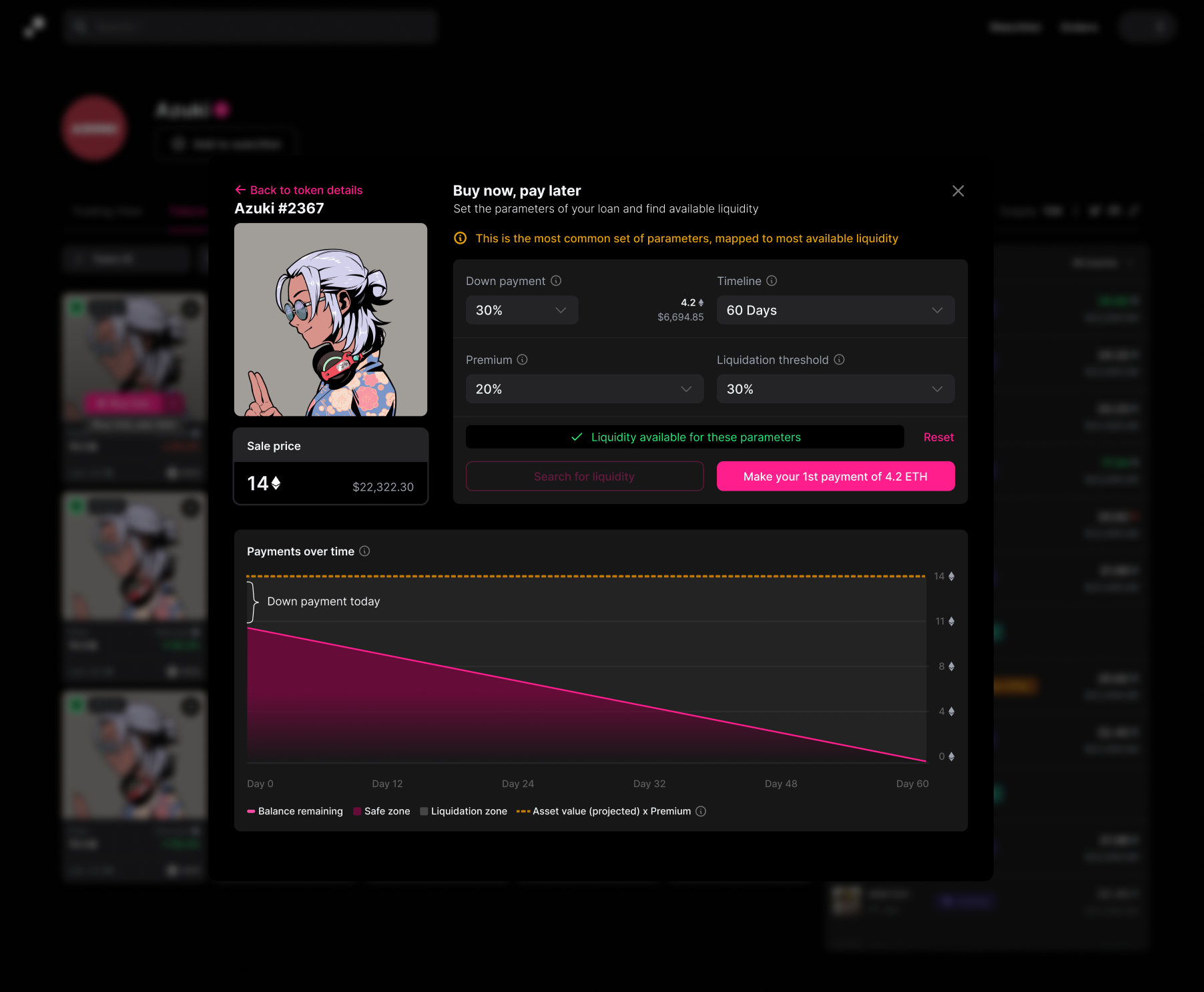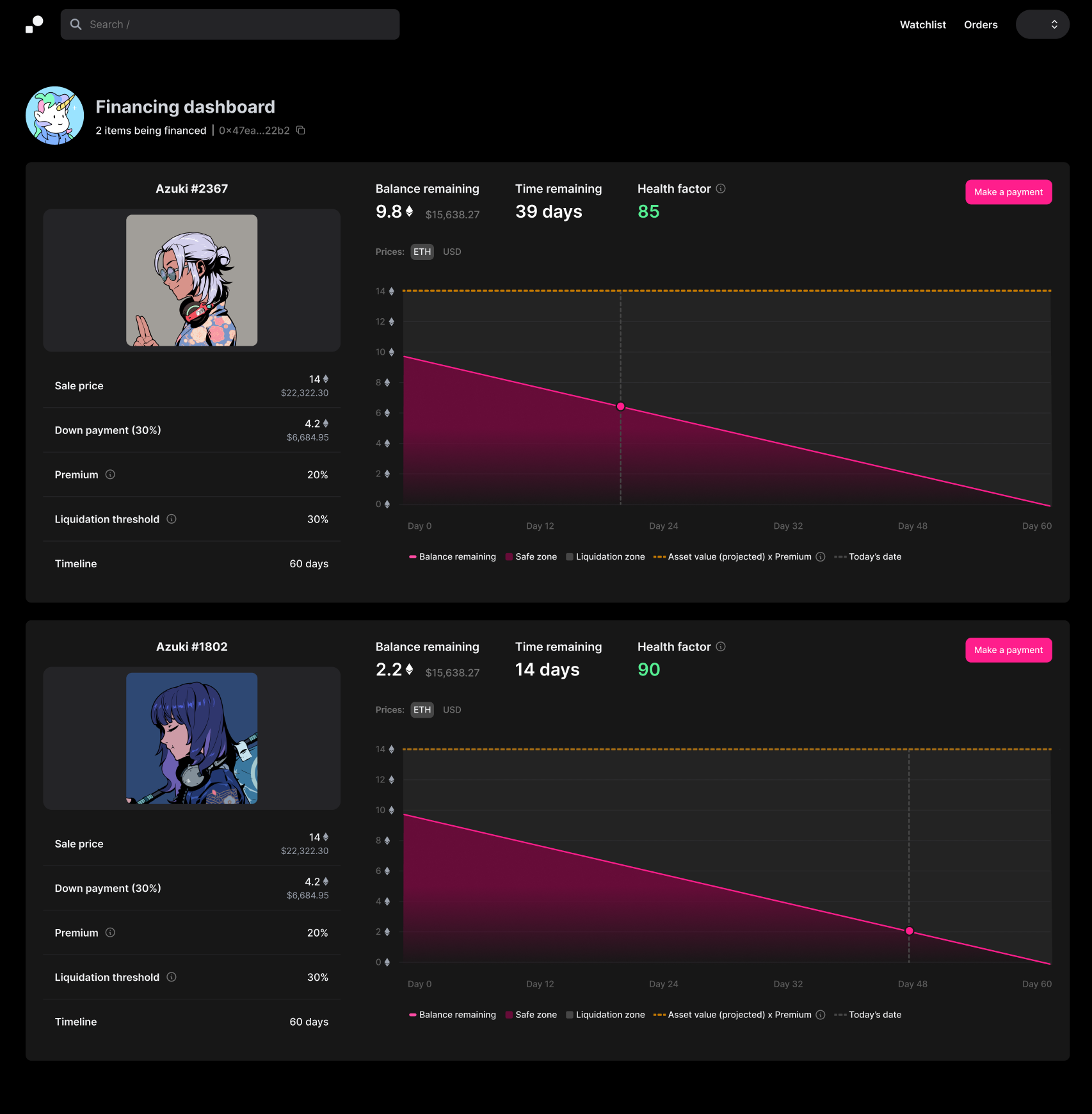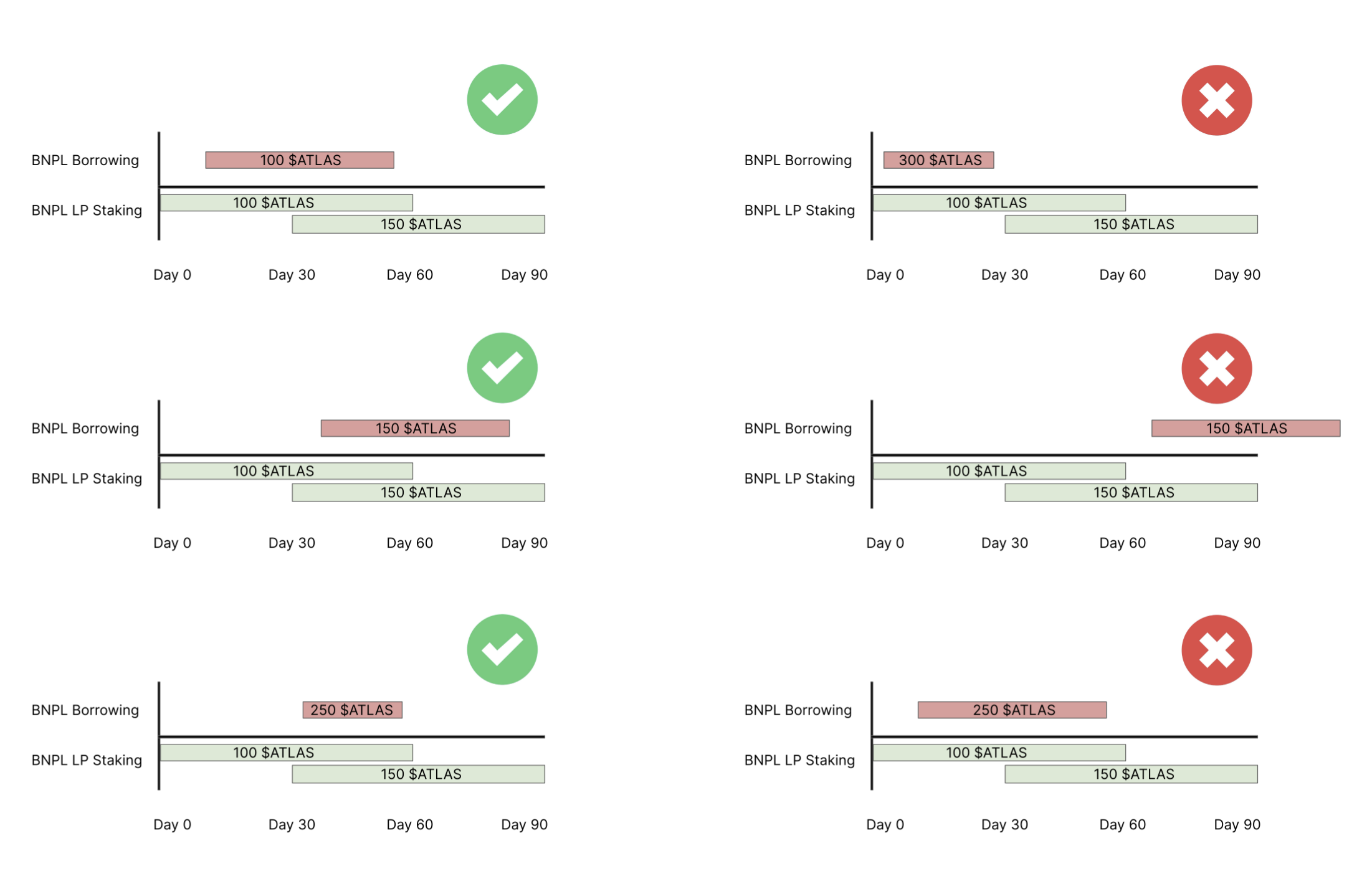Buy Now, Pay Later
Introducing Buy Now, Pay Later (BNPL)
Atlas' BNPL protocol is the first in a series of powerful financial tools for NFTs which allows buyers to put down a fraction of the payment required for purchasing an NFT upfront and paying off the rest later.
Why is this useful to me?
The benefit of BNPL comes down to a single word: flexibility.
As a trader, it's important for you to be ready at a moment's notice with liquidity in case an opportunity presents itself. However, by buying NFTs upfront, you're locking all of the value of your liquidity into the NFT for as long as you hold it (and selling isn't always quick, either).
Using our BNPL allows you to gain exposure to the NFT you want to purchase while ensuring that a large percentage of the capital you would have poured into the NFT is freed up for other opportunities that come at a moment's notice. With this method, you can engage with NFT trading under other capital constraints (for instance, if you have tokens locked up in a staking contract for a set period of time but want to buy an NFT off spot right now with the tokens you'll receive in the future once you are able to unstake).
Ultimately, this flexibility leads to far more sophisticated trading strategies that can help you generate greater returns in the NFT market.
If you're a trader looking for a new superpower in the NFT market, read on.
How does it work?

You can view BNPL options for a supported collection through the grid view or token modal
For Buyers
- Choose the NFT you'd like to purchase from a supported collection.
- Enter the BNPL flow by either clicking the dropdown in the "Buy Now" button and selecting "Buy Now, Pay Later" or by entering the token analysis modal and clicking the "Buy Now, Pay Later" button.
- Once you've entered the BNPL modal, select the pool you'd like to execute your BNPL trade with based on the parameter options. Pools will have the following parameters:
- Down payment: the percentage of the asset's initial spot price required to initiate a BNPL transaction.
- Premium: the percentage of the asset's initial spot price required in order to pay off the entire asset in addition to the spot price of the asset. For instance, if a Bored Ape is listed for 100 ETH and the premium is 10%, you can successfully execute a BNPL deal by paying off 110 ETH within the timeline.
- Timeline: the lifetime of the BNPL period. If the NFT is not paid off in full before this time expires, it will be immediately sent to liquidations.
- Liquidation threshold: the percentage of the asset's estimated value that must always be greater than the value paid off at any given time. If the liquidation threshold is breached by a decline in asset value, the NFT will be immediately sent to liquidations.
Note 1: The estimated value changes on a real-time basis and is calculated currently by our ML-based valuation engine.
Note 2: The down payment must always be at least as much as the liquidation threshold; otherwise, the NFT would be liquidated immediately.
Adopting the following shorthand:Collection: down payment, premium, timeline, liquidation threshold, here are a few examples you may find: - Bored apes: 20%, 30%, 3 days, 10%
- Azuki: 30%, 20%, 60 days, 30%
In the future, we may introduce other optional parameters, such as liquidation methods.

At any time, you can visit your Account section in Atlas to view your outstanding BNPL transactions and their respective health levels as well as pay them down further.

It's important to note that your NFT will be held in an escrow contract until it is fully paid off and will be liquidated if time runs out or the liquidation threshold is breached.
For Liquidity Providers
- Find a supported collection you'd like to provide liquidity for. A collection is supported if it has a "BNPL Liquidity" button on the collection page or on the home page table of collections.
- Select the pool you'd like to provide liquidity for. Each pool will be defined by the four parameters above:
down payment,premium,timeline, andliquidation threshold. - Select your staking period, stake amount, and option to auto-reinvest for that staking period.
- Sign the transaction to stake your chosen liquidity for your chosen staking period.
- Once the staking period is finished:
- If you selected the auto-reinvest option, your proceeds will be re-staked. You can choose to cancel the auto-reinvestment option at any time.
- If you did not select the auto-reinvest option, you can unstake the proceeds.
Note that positive returns are not guaranteed based on the liquidation method. Returns may be negative.
How the token fits in
Atlas will have a treasury governed by a DAO which will be used to seed our NFT financialization products with liquidity, starting with our BNPL protocol. Proceeds from the initial token sale will be used to fund this treasury.
Our BNPL protocol as described in the docs below will operate using our native token ($ATLAS). Users will stake tokens for a period of time in a collection BNPL pool. The amount of liquidity committed in the pool for a given time window will determine the amount that can be borrowed for a BNPL loan at any given time. Below is a diagram illustrating valid and invalid examples.

At the time of BNPL purchase, the appropriate amount of liquidity will be used to pay for the NFT at spot using the staked $ATLAS tokens through our aggregator, in addition to whatever token the buyer is using for a downpayment.
Having one base unit of measurement ($ATLAS), rather than multiple currencies which shift in value relative to each other, makes it much easier to distribute outcome rewards (premiums paid or margin from liquidations) back to stakers, where each BNPL outcome reward per staker is proportional to how much $ATLAS they had staked versus the total $ATLAS drawn from in the pool at the time of purchase.
This staking mechanic will decrease circulating supply and create upward price pressure, which will also increase the purchasing power of staked tokens in the liquidity pools.
Updated about 1 year ago